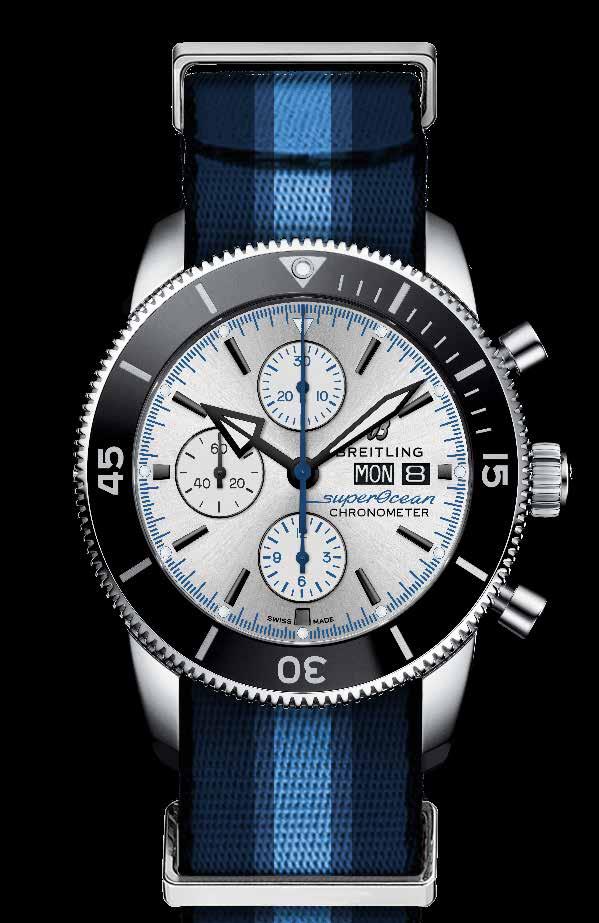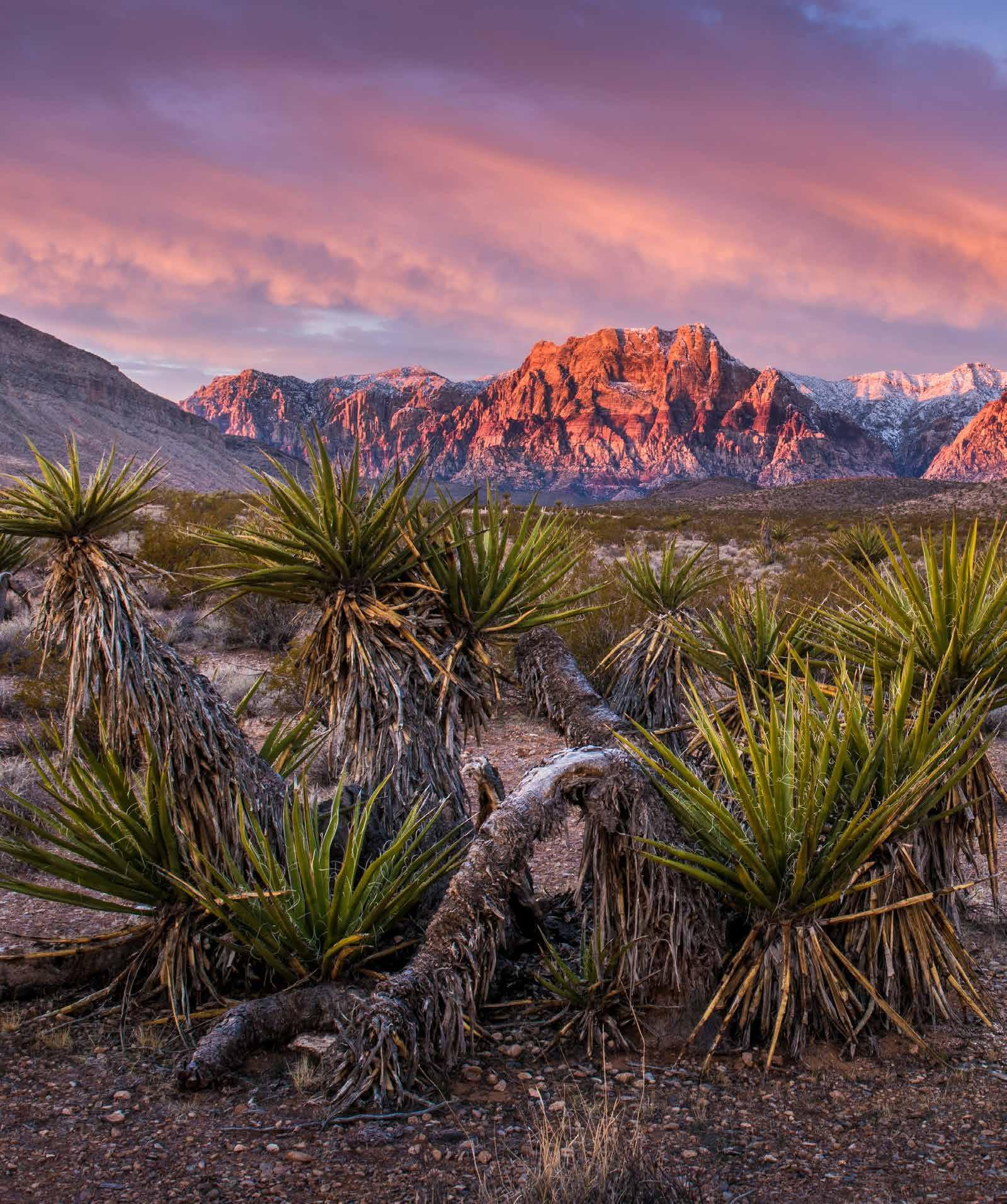
8 minute read
Call to arms Eco-adventurer David de Rothschild on his mission to inspire a generation
CALL TO ARMS
David Mayer de Rothschild is on a mission to inspire the next generation of eco warriors
The Rothschild dynasty needs no introduction. One of the world’s richest banking families, the Rothschilds possess a portfolio so strong and diversified it’s almost impossible to quantify; the name itself conjures a vision of wealth, power, and suited and booted businesspeople.
However, there’s one family member who cannot be pigeonholed into this stereotype. David de Rothschild was educated at Harrow like his financier father Sir Evelyn, and seemed primed for a career in banking. But upon graduation, he veered away from the financial road his family had set out in favour of a course in environmentalism and a lifelong passion for adventure. Now 41, British ecologist Rothschild boasts a world record for the fastest crossing on the Greenland ice cap and is the youngest person to reach both geographical poles.
In 2010, inspired by his trips to the Antarctic, he combined the enterprising Rothschild spirit with his expertise of the natural world, expedition experience and global contacts base to become what is best described as an “eco-adventurer”. His most famous project was sailing from California to Sydney in 2010 in a boat called Plastiki – made from 12,500 reclaimed plastic bottles – to raise awareness of plastic pollution.
More recently, Rothschild has joined fellow adventurers Inge Solheim and Bertrand Picard on Breitling’s Explorer Squad –and it was at the fine watchmaker’s Bond Street boutique that we meet Rothschild. The night before, he’d unveiled Breitling’s new Superocean Heritage Ocean Conservancy, a limited-edition timepiece with an environmentally-conscious strap made of ECONYL yarn – created from recycled fishing nets – a piece he seemed genuinely fascinated by.
After very little small talk (it’s not his style), we launch into conversation about his biggest passion – the environment – and how he hopes to inspire the next generation of eco warriors. »
CHANGE ONLY HAPPENS WHEN YOU BECOME CURIOUS, AND THAT ONLY BEGINS WHEN YOU START TO ASK QUESTIONS

David de Rothschild’s Sculpt the Future Foundation supports eco-friendly ventures. Right: Breitling’s Superocean Heritage Ocean Conservancy.

I’m driven by curiosity. In my early 20s I finished a degree in natural medicine, which connected me into the understanding that you are what you eat, you are what you breathe. If we start to look at what we’re eating, and what we’re breathing, we’re intrinsically looking into an environmental conversation. You can’t separate the two.
We used to think health was one thing, education another, security another and environment yet another separate concept. But we now know that all the pillars blend together. You can’t have a healthy world without safe world; you can’t have a safe world without an educated world; you can’t have an educated world without a sustainable world. It gets to a point where you look at the world and think, ‘Where do I want to put my energy?’ And if you’re really lucky, like me, you can find a passion that actually connects to something that you can do.
What was the tipping point when you found your life’s purpose?
In 2004, I was invited to Antarctica. That trip was a Sliding Doors moment where all of those worlds collided. When I came back, everything changed. I launched my organisation, Adventure Ecology, as a platform that used adventure as a medium to inform and inspire, and to make learning an adventure around fragile ecosystems.
We are in a golden age of exploration where we can explore our relationship with nature and develop our understanding. People like David Attenborough and the creators of all these great nature programmes that watch nature through lenses have inspired people. I call it ‘nature porn’. The tools that we are able to film and record with have allowed us a much greater depth of understanding. We can go to the bottom of our oceans and take samples of soil from the seabed. We can fly drones up into the canopy of the jungle to count species in the top of the trees, which we could never do before. We can monitor the world like never before.
Technology has opened up a massive opportunity for exploration. So then the question is: how do you translate the data and the science into emotional stories that people can gravitate towards? People don’t become motivated by a statistic or a number, they become motivated by a story. And this is what we do at Adventure Ecology.
What are you hoping to achieve through the Sculpt the Future foundation?
Sculpt the Future Foundation is really focusing on people who have big ideas, and a lot of passion, and giving them small grants that go a long way. It’s focused mainly on two main brackets. One is creativity for change, and one is innovation for change.
We’ve funded some really interesting projects such as Litre of Light, which started in Manila in the Philippines. They take empty soft-drink bottles that they find in the street, put a little bit of water and chlorine in and drop it through a hole in the roof, then seal it. This creates light without any risk of fire. They’re like little sky walls. It’s really smart. We also helped explorer Ed Stafford walk the Amazon and we helped Roz Savage, the first female rower to cross the oceans. There’s an eclectic mix of people who are adventuring, exploring, creatives, but it all comes back to storytelling.

How do you hope storytelling will inspire change?
Hopefully it will allow you to make a connection to how the big picture works, and how you can play a part. That might be only supporting brands that you believe are having a positive impact or, for a business, this might be supporting charities or looking after its workers and its supply chain correctly.
I think change starts from curiosity, and that only starts when you start to ask questions. When you feel engaged, then that’s the starting point for you to then say, ‘You know what? I really do feel strongly about that. I want to make sure that my councillor is recycling. Who sits on the head of my council? What is their policy? When did they vote?’ Because everything’s there for us to see, but we’re busy and we’re not looking. As a society, we should open our eyes and ask, “How do we do our best to contribute to living just better? Just living a little bit better.”
How do you choose which brands to work with?
I work with brands I believe have the capacity to effect change; brands that think bigger than just focusing on creating a profit. Transparency is number one – you can’t make an informed decision if you can’t see what’s going on. It’s also more than just the product experience, it’s what the brand stands for and who it stands for.
I work with people whom I trust and value; people who allow me to be authentic. That’s what Breitling does – it allows all of its ‘squads’ to be authentic. It allows all of us to be able to operate in a way that we would normally operate. This way the audience is engaged.
How did you get involved with Breitling?
I know CEO George Kern well – I’ve had a relationship with him since 2006. George has always stood by his word – he helped me with Plastiki and my trips in Ecuador. Through Breitling, he gave me a voice and a platform to talk to people like Tempus’ readers, and get my message out there.
I want to be involved with people who are doing interesting things and be supported by a brand that is on the move. Breitling will be the first to say that they’re in a transition period and that we can always improve. I think it was exciting to see the use of interesting materials that you can then use in the watch strap, say. Here, you’ve got a watch that is generating capital that can go back to ocean conservancy, while elevating this important issue to a new audience. By buying the watch, people are wearing the message as well as spreading it.
Do you think luxury brands are changing as a result of increasing conversations on climate change?
I think brands are realising that it’s not just about commercialism. They’re asking: ‘How do we do more?’ Because that’s what the audience is now demanding. They want transparency. For the first time ever, we’ve got devices that allow us to see every part of the process. And if you’re not authentic and you’re not transparent, at some point you’re either losing customers, or customers are calling you out.
What’s the biggest challenge to progressing further?
What I’ve tended to notice is that one of the stumbling blocks in the way of progress to make things better is that we have a tendency to want to focus on the negative. I get comments from people saying: ‘Yeah, but you flew to this talk.’ Of course I did, but I look at it as a means to an end.
I hope that when I have this conversation, it will inspire someone to think differently. And that’s worth me offsetting the carbon for getting here. You have to look at the balance.
I hear the same thing about Leonardo DiCaprio. He’s done incredible things. His foundation does amazing stuff. He does a tonne of incredible work with the Amazon. ‘Oh, he’s a celebrity, and he flies on a plane.’ So that’s what you’re going to focus on? Instead, we need to focus on saying, ‘Look, nobody’s perfect. I’m not perfect. You’re not perfect, but we’re all trying to do things better.’ It’s not black and white.










